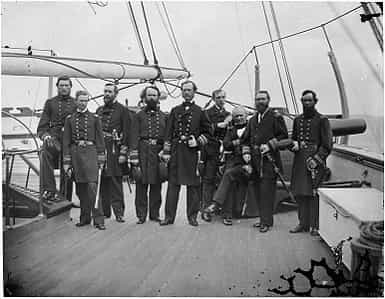
How Buyer Trends & Style Are Redefining Apparel Sizing Standards
When it comes to buying clothes, one size doesn't fit all. In fact, the concept of a "standard size" in clothing has been under scrutiny for years, and it's slowly but surely changing. As buyer trends shift, styles evolve, and the rise of and the rise of on-demand manufacturing, unisex and genderless clothing gains momentum, the apparel industry is being forced to rethink traditional sizing models to meet modern consumers' needs better.
The Problem with Standard Sizes
The idea of "standard sizes" in clothing has long been a cornerstone of the fashion industry. These sizes are typically based on average body measurements, which are supposed to represent the majority of consumers. However, the reality is that body types vary widely, and what fits one person perfectly may be completely off for another. This disconnect has led to a host of issues, including:
- High return rates
- Customer dissatisfaction
- Lack of inclusivity
According to a study published in the International Journal of Fashion Design, Technology and Education, the average American woman wears between a Misses size 16-18, significantly larger than the standard sizes offered by most retailers. Traditional sizing models often fail to account for the nuances of different body shapes, leading to frustrating shopping experiences. As a result, bracketing behavior—where customers buy multiple sizes of the same item to return those that don’t fit—has increased.
Fit Models and Sizing Inaccuracies
One contributing factor to the ongoing problem of standard sizing is the reliance on fit models. Fit models are used to standardize sizes, but they often represent an "ideal" body shape that fails to reflect the diversity of real customers' bodies. These models are generally chosen based on industry-standard proportions, which means many brands may not account for variations in body types like shorter torsos, wider hips, or fuller busts. This outdated approach can lead to poorly fitting garments that alienate a large portion of the consumer base.
Brands that don’t adapt their sizing systems to reflect diverse body types not only frustrate their customers but also miss out on an opportunity to reduce returns and increase loyalty. As consumer demand for inclusive sizing grows, the limitations of relying solely on fit models are becoming more apparent.
The Rise of Unisex Sizing and Clothing
In recent years, unisex clothing has emerged as a significant trend in the apparel industry. Brands are increasingly offering gender-neutral collections that appeal to a broad audience, emphasizing comfort, versatility, and inclusivity. However, unisex sizing presents unique challenges, as it must cater to a wide range of body types without compromising fit.
Unisex clothing is typically designed with a looser fit to accommodate both men’s and women’s bodies, but this approach can sometimes lead to sizing issues. For instance, a unisex medium might fit a man perfectly but be too loose on a woman, or vice versa. Brands are now developing new sizing systems that offer more flexibility and customization to overcome these challenges.
According to a report from Business of Fashion, the demand for unisex and gender-neutral clothing is driven primarily by younger consumers who prioritize inclusivity and reject traditional gender norms.

The Shift in Buyer Trends and Style
Over the past decade, buyer trends have begun to shift significantly. Consumers are now demanding more from their shopping experience—they want clothes that fit well, look good, and make them feel confident. Several factors have contributed to this shift:- Rise of athleisure: The global athleisure market is projected to reach $547.9 billion by 2024, according to a report by Allied Market Research [3].
- Growing popularity of sustainable fashion: A survey by McKinsey found that 67% of consumers consider the use of sustainable materials as an important purchasing factor [4].
- Influence of social media: Instagram and other platforms have changed how consumers discover and shop for fashion.
The Role of On-Demand Manufacturing
On-demand manufacturing is gaining popularity as a response to shifting consumer demands and the push for more sustainable production methods. Unlike traditional manufacturing, which often involves producing large quantities of clothing based on speculative demand, on-demand manufacturing allows brands to produce items only after they’ve been ordered. This reduces overproduction, waste, and inventory costs.
This model also presents opportunities for more personalized sizing, as clothing can be tailored to the customer’s unique body measurements. This is especially valuable in a landscape where standard sizing often fails to meet the needs of a diverse customer base.
How AI-Driven Sizing Tools Are Leading the Change
As the industry grapples with these changes, technology is stepping in to offer solutions. Bold Metrics' AI-driven sizing platform is a prime example of how innovation can address the challenges posed by traditional sizing models. By creating a unique digital twin for each shopper, our platform maps over 50 individual body measurements, allowing brands to offer precise size recommendations on a style-by-style basis.
This level of personalization not only improves fit accuracy but also enhances the overall shopping experience, leading to higher conversion rates and fewer returns. As more brands adopt AI-driven sizing tools, the industry is gradually moving away from the one-size-fits-all approach and towards a more personalized, customer-centric model.
The Future of Apparel Sizing
The transformation of standard sizing is far from over, but the industry is on the right path. As buyer trends evolve and unisex clothing continues to grow in popularity, brands must adapt to the changing landscape. The rise of on-demand manufacturing and AI-driven sizing solutions offers a glimpse into a future where clothing is tailored to each consumer's unique needs, delivering both a better fit and a more sustainable production process.
Conclusion
The concept of "standard size" in clothing is being challenged like never before. As buyer trends and styles continue to evolve, and with the growing popularity of unisex clothing, the industry must adapt to meet the needs of a diverse and discerning consumer base. Bold Metrics is proud to be at the forefront of this change, providing brands with the tools they need to deliver a better, more personalized shopping experience.
Want to learn more about how our AI-driven sizing solutions can transform your brand? Explore our platform and discover how you can stay ahead of the curve in this rapidly changing industry.
Sources:
- Christel, D. A., & Dunn, S. C. (2017). Average American women's clothing size: comparing National Health and Nutritional Examination Surveys (1988–2010) to ASTM International Misses & Women's Plus Size clothing. International Journal of Fashion Design, Technology and Education, 10(2), 129-136.
- Business of Fashion. (2021). The State of Fashion 2021. https://www.businessoffashion.com/reports/news-analysis/the-state-of-fashion-2021-report-bof-mckinsey
- Allied Market Research. (2018). Athleisure Market by Product Type and End User: Global Opportunity Analysis and Industry Forecast, 2017-2024. https://www.alliedmarketresearch.com/athleisure-market
- McKinsey & Company. (2020). The State of Fashion 2020: Coronavirus Update. https://www.mckinsey.com/industries/retail/our-insights/the-state-of-fashion-2020-coronavirus-update
- Business of Fashion. (2021). The State of Fashion 2021. Link
- Allied Market Research. (2018). Athleisure Market by Product Type and End User: Global Opportunity Analysis and Industry Forecast, 2017-2024. Link


.png?width=600&height=408&name=march%202023%20-%20french%20toast%20(1).png)

.png?width=1080&height=1080&name=Bold%20Metrics%E2%80%99%20digital%20twin%20technology%20helps%20some%20of%20the%20worlds%20biggest%20bands%20increase%20conversion%20and%20AOV%2c%20reduce%20returns%2c%20optimize%20their%20customer%20experience%2c%20and%20boost%20brand%20loyalty.%20(2).png)


%20(9)-1-1.png)



